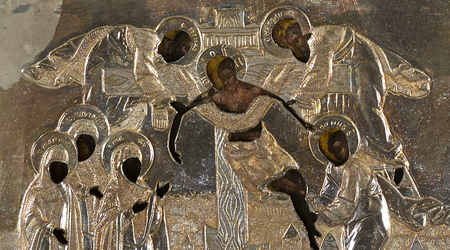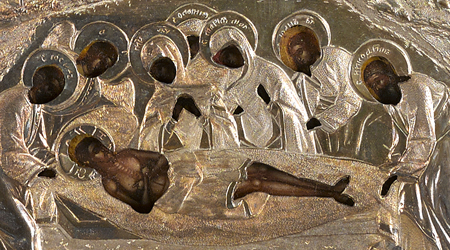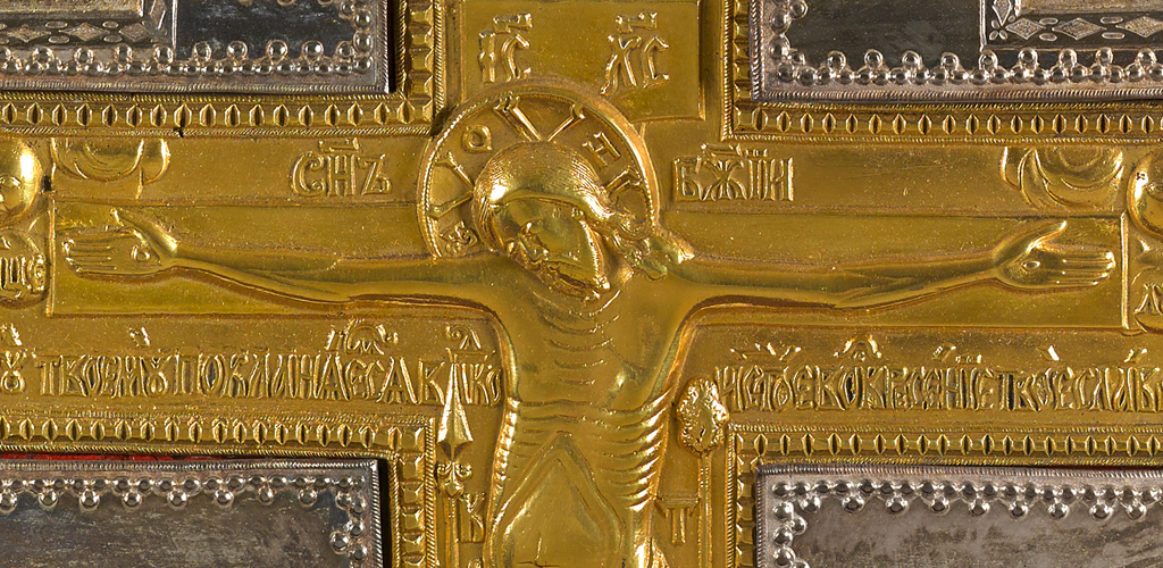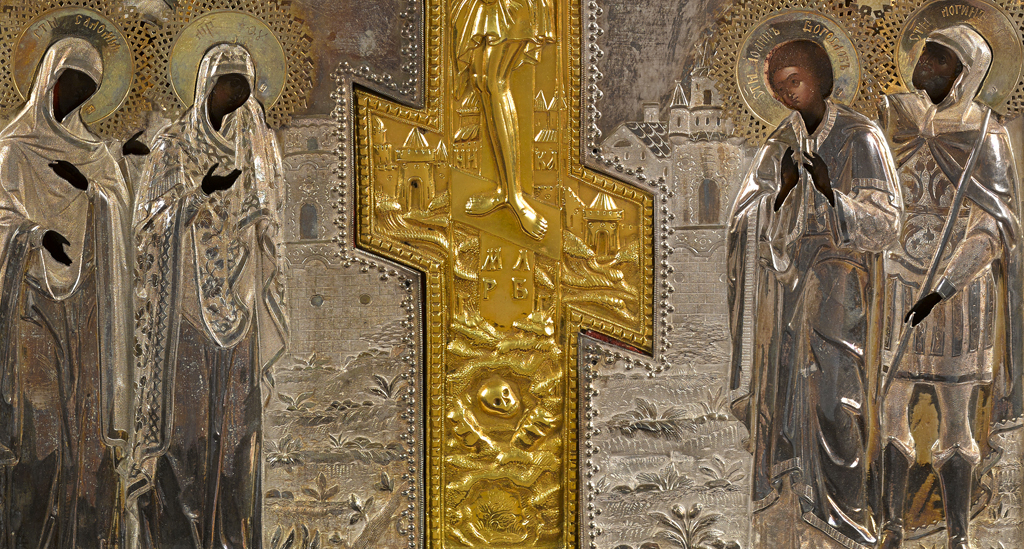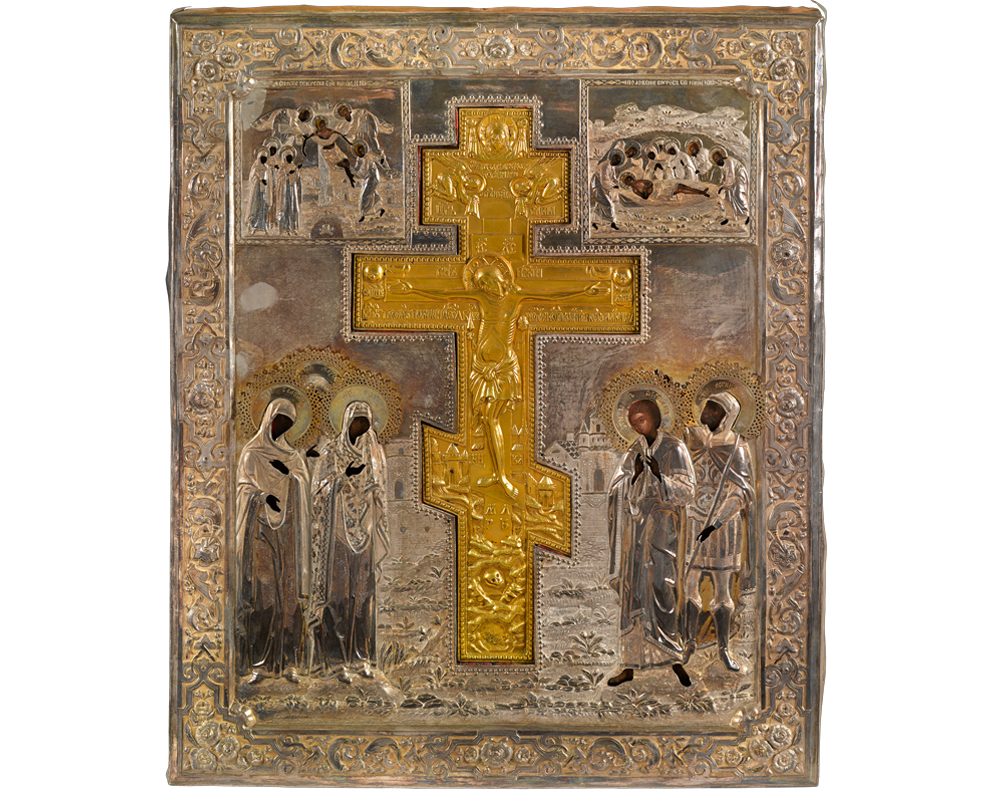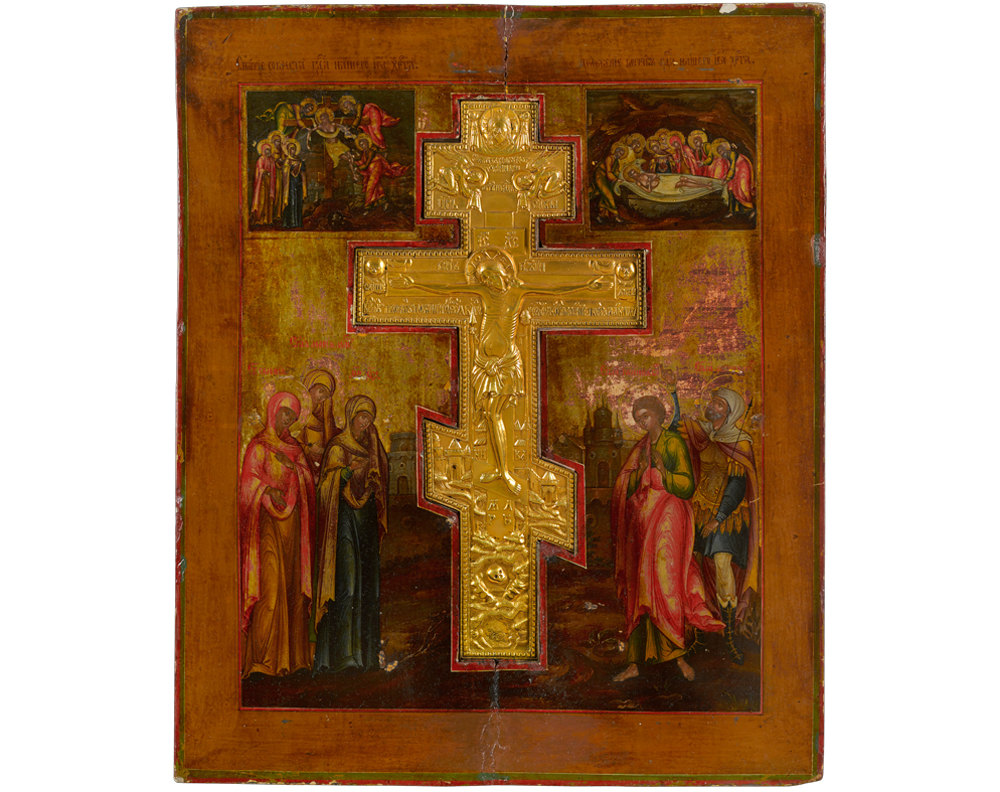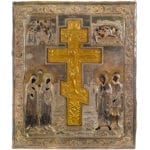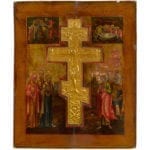Exhibitions
Icons and Easter Eggs of Imperial Russia, Hearst Art Gallery, St Mary’s College, Moraga, CA, 1995
Bibliography
A. Ruzhnikov, A. Harlow, Icons and Easter Eggs Of Imperial Russia, St Mary’s College of California, Moraga, 1995, no. 33, p. 14
A traditionally painted icon with a brass Crucifix set into the panel, encased in a silver repoussé and engraved oklad with applied silver-gilt haloes and a foliate border.
In the centre of the composition is Jesus Christ nailed to the Cross, flanked by grieving figures. On the left stand the Virgin Mary, Mary Magdalene and St. Salome the Myrrhbearer, On the right are St. John the Evangelist and St. Longinus. Beneath the Cross is the skull of Adam, who, according to tradition, was buried in the same place where Jesus was later crucified. The scene is painted against a stylised architectural background symbolising Jerusalem. In the upper corners of the composition are the depictions of the Deposition from the Cross (left) and the Entombment (right).
The crucifixion is one of a few events of Jesus’ life recounted in all four gospels. “Then he delivered Him to them to be crucified. Then they took Jesus and led Him away. And He, bearing His cross, went out to a place called the Place of a Skull, which is called in Hebrew, Golgotha, where they crucified Him” (John, 19: 16-18).
The iconography of the Crucifixion emerged in Early Christian art. The earliest extant depictions of Christ on the Cross appear on the early 5th-century wooden doors of the Church of Santa Sabina in Rome and on on a small ivory panel now in the British Museum. By the 6th century representations of the Crucifixion became widespread in Byzantine art to be later adopted in the West and in Russia.
